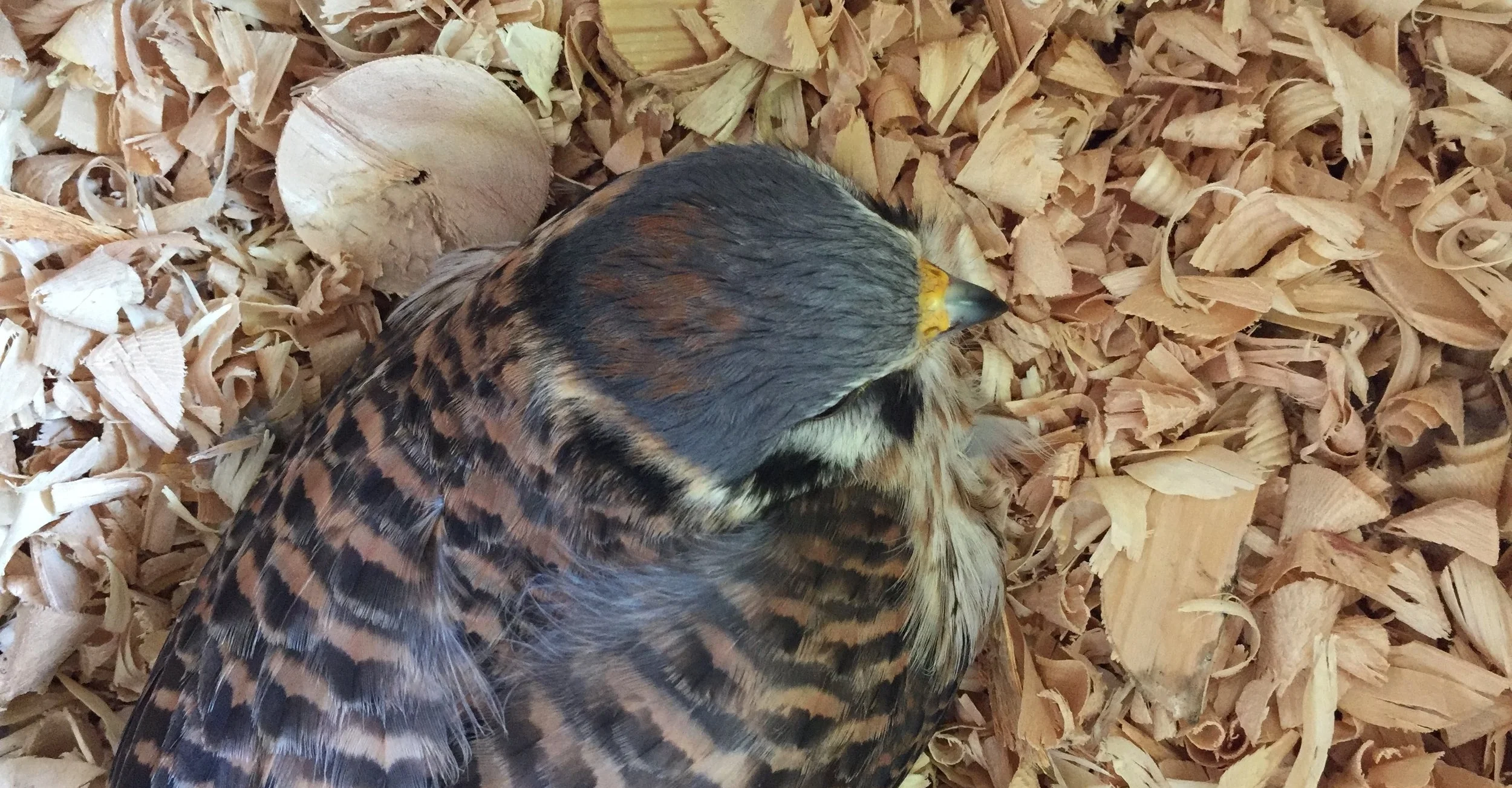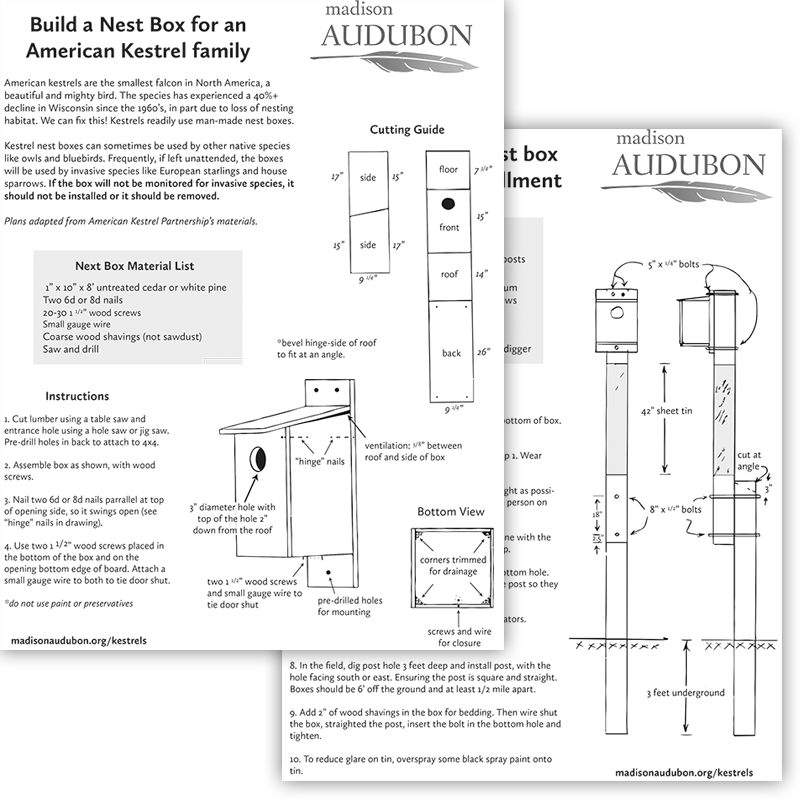Give an American Kestrel family a home
About the Kestrel Nest Box Monitoring Program
Photo by Patrick Ready
American Kestrels are a beloved falcon for their tiny stature, big personality, and beautiful coloring. However, the kestrel population in our region declined 53% between 1966 and 2019, according to North American Breeding Bird Survey data. This is partly due to loss of their natural nesting trees with cavities. Our goal is to reverse that trend.
This project is coordinated by volunteer Brand Smith, Southern Wisconsin Bird Alliance (formerly Madison Audubon) staff, and many volunteers. This group has constructed, erected, and monitored nearly 200 kestrel nest boxes since 2009 (more details in the American Kestrel Partnership Fall 2022 newsletter)! Nest boxes provide kestrels with a much-needed safe nesting cavity to raise a brood of young and are an effective tool in increasing kestrel numbers overall. And our volunteers are doing a great job spreading the word — just check out this article from June 2022 by volunteer Joni Crave that describes how no-till agricultural practices on her farm benefit kestrels.
Each year our program fledges hundreds of kestrel chicks, with the help of volunteers. That is amazing!
Get Involved!
Photo by Patrick Ready
VOLUNTEER: We are now full for the 2024 season! Thank you!
Join the team of volunteers across 13 counties in south-central Wisconsin who make visits to nearby nest boxes to document nest activity, including return of adults, egg laying, hatching, and fledging. Visits are WEEKLY March through July. To monitor nests, volunteers use various methods, ranging from small spy cameras to cell phones to photograph the inside of nest boxes, and use this information to complete datasheets.
Volunteers undergo training in January, make weekly visits to the nest box between March and July, and clean out the nest in fall (usually around 11 hours of volunteer time, plus driving). Volunteers must have access to a vehicle, be able to walk short distances on uneven terrain, and do some minor lifting and reaching. It is a fun and rewarding activity!
Another way to get involved: Build and monitor a nest box!
BUILD: Or, you can construct a kestrel nest box to install on your property. The one catch is that we ask if you install a nest box that you also commit to monitoring it. If left untended, nest boxes can be taken over by invasive species like starlings and House Sparrows. Click here to download the construction plans.
Learn more about American Kestrels and our work to support them
Madison Audubon Photo
Contact Us!
With specific questions and to volunteer, contact:
Brand Smith - Kestrel Nest Box Monitoring Program coordinator
Email: brandsmith2@charter.net
Phone: 608-444-8952
For general questions, contact:
Brenna Marsicek - SoWBA director of outreach
Email: bmarsicek@swibirds.org
Phone: 608-255-2473
Additional Resources
Our nest box program works closely with the Central Wisconsin Kestrel Research project, based out of Stevens Point. They're a wealth of knowledge and are doing incredible work to understand and conserve these tiny falcons! Their staff work with our volunteers and the BBA staff to band kestrels from our nest boxes each summer (as shown in this photo).
The American Kestrel Partnership, part of the Peregrine Fund, is a nation-wide conservation program to support kestrels. Many kestrels which nest in our boxes are banded and a tiny feather sample is sent to the AKP to study kestrel genetics.
We are grateful to Wisconsin Housing Preservation Corp./Kestrel Apartments for their sponsorship of the 2023 Kestrel Nest Box Monitoring Program
Banner photo by Patrick Ready



















Several years ago, a pair of American Kestrels occupied a nest box in one of the prairies at Fair Meadows, and I had the opportunity to observe social interactions of their newly fledged young.
Photo by Gary Shackelford